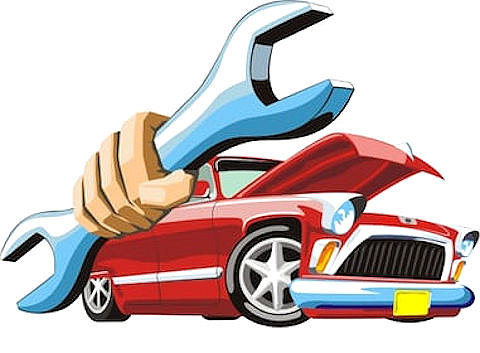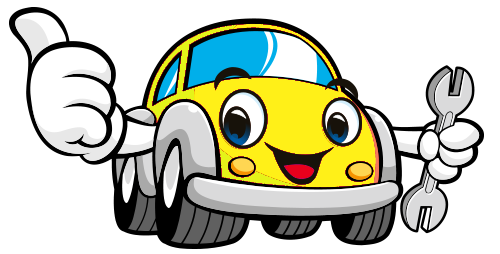

Mobile users:
For best results, view in Landscape mode.

Transmission Fluid:
This check is while
the engine is running.
The transmission should be at operating temperature.
Remove dipstick, wipe clean, insert and remove again
to check the fluid level.
Be careful not to overfill!
The
transmission fluid is part of a closed system and should be
red or reddish
- brown in color.
If you check
it, and it’s brown or smells burnt, it’s time to replace
the fluid.
Some manufacturers recommend that you
should change your
transmission fluid about every 30,000 miles.
And others suggest once every 100,000 miles.
Most transmission failures are the result
of fluid contamination.
Be careful!
Draining your transmission fluid is not like draining
the oil.
At least 70% of your transmission fluid is held within
various
components in your system.
Check with your mechanic for
professional advice or service.
Windshield Washer Fluid:
and filling it with washer fluid.
Keep it full. It’s important to keep your windshield clean, especially
during the winter and anytime there is sun glare.
Power Steering Fluid:
This check is
done by removing and checking the dipstick.
Use the dipstick to check fluid level in the same way you
would
the engine oil.
On newer vehicles, you can visually check the reservoir.
If you hear weird noises as you steer, or find it hard to
steer,
your power steering fluid may be running low.
Antifreeze/Coolant:
Check the antifreeze/coolant level weekly.
Some cars have transparent reservoirs with level markings.
This check should be done by removing the radiator cap from
the cool engine or reservoir.
Caution: Do not remove the
pressure cap when engine is hot.
If a refill is needed, fill with a 50/50 mix of water
and antifreeze.
<<< Warning >>>
Antifreeze/coolant is toxic to children and animals.
Brake Fluid:
Usually in a clear reservoir marked with minimum and maximum
lines.
The brake fluid is also part of a closed system and should
never run low.
This check is done by loosening the top on the master cylinder
and removing the lid.
If fluid is needed consult your owner's manual for correct type
and fill to recommended level.
Check color of fluid, it should be a golden color.
If the fluid appears brown, it is time to have the fluid replaced.
If your brakes ever feel a little off, check the brake fluid first.
Fill if it’s low, but then have the system checked, there could
be a leak or the brake pads may be wearing.
The brake fluid level will drop slightly as the brake pads wear out.
This is a normal condition and you shouldn't worry about it.
If the level drops noticeably over a short period of time or goes
down to about two thirds full, have your brakes checked
as soon as possible.
Take care when handling brake fluid.
It can damage the finish of a painted surface.
Check the Oil:
Most
service attendants will offer to check your oil when the
engine is hot.
Some will even show you the dipstick to validate claim
engine
needs oil, ( the oldest trick to sell you more oil ).
It is then overfull causing a smoky exhaust.
Always
check on level ground when the engine is cold to
give accurate reading.
Remove the dipstick, wipe with a paper towel, reinsert the
dipstick completely in the tube.
Remove the dipstick and read oil level.
The dipstick should have a normal range indicated.
Add oil only
when oil level is at or below Add Oil
mark.
Be careful not to overfill.
Changing your oil is one of the most
important things that that
you can do to improve the life of your engine.
You should change your oil every 3,000 miles or every 3
months.
7,000 to 10,000 miles on newer cars.
An oil change service is referred to as an "Oil,
Lube & Filter,"
the lube is a chassis lubrication where the
mechanic applies
grease to various steering and suspension joints
under the car.
Newer
cars are manufactured with sealed joints that don't have
grease fittings, however if any of these parts were
replaced, the
new parts probably do have lubrication points and must
be greased to prevent premature wear.
The best way to tell
when you need to change your oil is to check it
regularly.
Fresh good oil is a clear golden
color.
Once oil starts to wear and break down, it starts to
become black
and thick and that causes wear and tear on the engine.
Make
sure you use the correct oil weight for
your car and
climate.
Transfer Case Fluid:
In four-wheel or all-wheel drive vehicles, the transfer case
is what shifts power from the transmission to the axles.
The transfer case fluid should be checked according to the vehicle
manufacturer recommendations to make certain that it is properly
filled and leak-free.
This requires you getting under the car, so it's recommended that
you ask your mechanic to check it for you.


